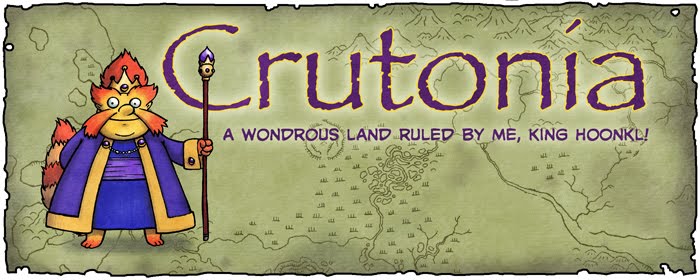
As I have mentioned, if you wander around parts of central and northern Crutonia, you run the risk of running into a nomadic group of scabee. Your chance of departing from their company in good condition, I am sorry to say, is slim. However, if you are just lucky enough, you may run into a very unique group of scabee. It is the scabee tribe of Ogsmuck the Hideous.
What makes this scaggle of scabees so unique? Well, first off, they won’t attempt to devour you, at least not right away. They will first ask for a story. This has to do with their caretaker, Smakubak. He is a half gooch, half heefermeinsteer fellow who enjoys a good tale. A long time ago, Smakubak found and raised an orphaned s
 cabee named Ogsmuck the Hideous. Smakubak taught this scabee to appreciate a good yarn. The scabees of the tribe now are descendants of Ogsmuck, and they all have learned to appreciate stories and not to attack creatures that could tell them a good tale. It is not a free pass, though; if the creatures could not tell them a good enjoyable story, the scabees are free to devour them as they naturally please.
cabee named Ogsmuck the Hideous. Smakubak taught this scabee to appreciate a good yarn. The scabees of the tribe now are descendants of Ogsmuck, and they all have learned to appreciate stories and not to attack creatures that could tell them a good tale. It is not a free pass, though; if the creatures could not tell them a good enjoyable story, the scabees are free to devour them as they naturally please.








